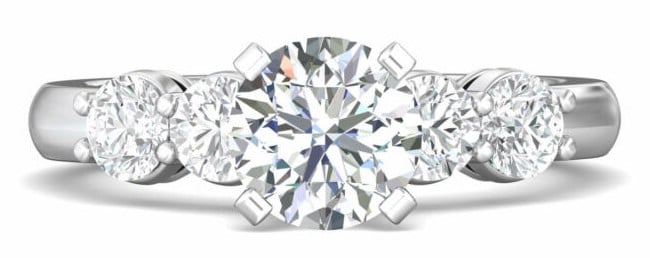Diamonds are known for their ability to catch light and sparkle. We may think this has to do with the “shape” of the diamond, but actually it has to do with the “diamond cut”. The diamond cut doesn’t mean that it is round, pear, oval, etc. It actually refers to how well the diamond facets play with the surrounding light.
When we refer to diamond cut, it is actually the act changing the diamond from a rough stone into a faceted gem. Since they’re extremely hard, cutting diamonds isn’t exactly easy. In fact, it requires specialized tools, techniques, equipment and techniques, and the work is typically done by a gem cutter.

Why Are Diamonds Cut?
The rough version of diamonds is actually not that impressive. In fact, it will just look like a pebble and may have scars all over it if it was mined. A diamond cutter will change this rough look into the precious gems we know so well. There are different cuts available, including single cut, table cut, Mazarin cut, Peruzzi Cut, point cut and old European cut.
The practice of cutting diamonds originated in the 15th century. Flemish cutter, Lodewyk van Berquem, invented the scaif in 1475. This was a diamond polishing wheel that could change the shape of the diamonds and make them more brilliant. Over the many years of cutting diamonds, the processes have greatly improved.
What Is the Process for Cutting Diamonds?
Diamonds can be cut by hand or by machine. The latter is very accurate, but the former requires extreme knowledge and a high level of craftmanship. The sawing will be done by either a steel blade or laser. It typically takes four to eight hours to cut a one-carat diamond with a saw.
To keep the diamond in place during the process, it is often placed in a wax or cement mold. It is then cleaved along the weakest point: the tetrahedral plane. If it doesn’t have a weak area, it will have to be sawed.
There are basic steps to cutting diamonds, including the following:
- Sorting through the available inventory: The goal when sorting through the rough diamonds is to find ones that will provide the greatest yield. The margins for creating quality diamonds are small. Most mined diamonds will turn to dust during the cutting process.
- Planning: This typically involves using software to plan out the diamond cut. The diamond will also be marked up to find the best shape.
- Sawing the rough gem into a starting shape: Some diamonds won’t be sawn. This will depend on different factors.
- Shaping the girdle: The girdle is the thin diamond perimeter. It divides the crown from the pavilion. This can be polished, rough or faceted. Step cut diamonds will have polished girdles while brilliant cut diamonds will have faceted girdles.
- Polishing: All the different facets will be polished.
Analyzing the Diamond Rough
Typically, the hardest part of the diamond cutting procedure is evaluating the rough of the diamond. This requires a lot of expertise by the diamond cutter. Calculations are made by the maker that determine the cut and yields, and the maker also has to determine the best possible gem to create in the current market conditions.
To start the process, three-dimensional scans are taken, which provide measurements, visualizations, color and clarity estimates, and maps of inclusions. This is an extremely important step since, once the cutting begins, errors can’t happen.
The End Result: A Brilliant Diamond
Once the cutting and polishing is finished, the maker is left with a diamond that can reflect and refract light – creating a brilliantly finished product. The cut is the most important part of the 4Cs of diamond quality.
Looking for the perfect diamond? Contact us today to learn more about our available inventory!

